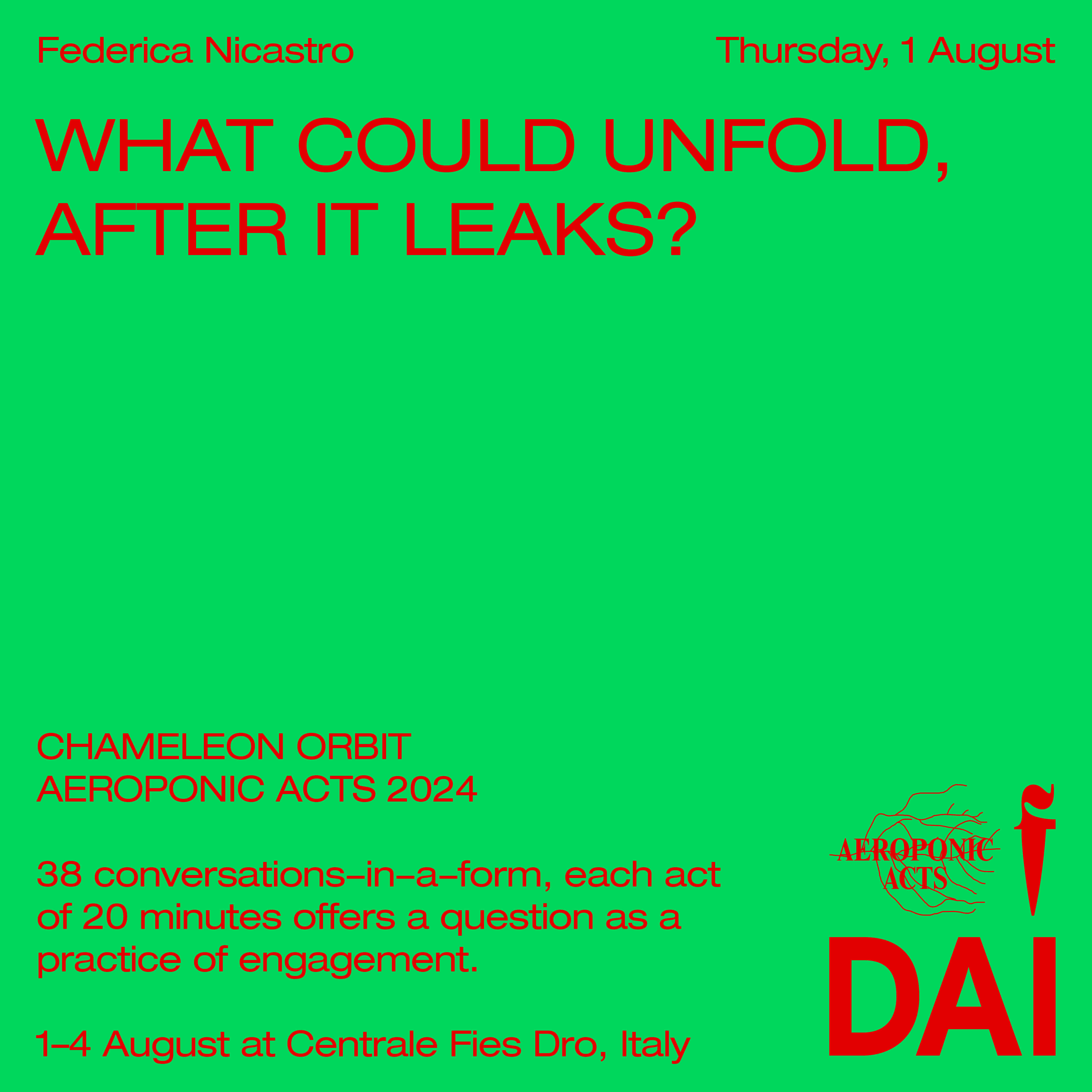Federica Nicastro ~ Softer, it crumbles
Softer, it crumbles is a restitution in more than one partition, part score for a hypothetical sound piece, part gray, confidential literature. Without resolution, is a textual disorientation that sustains emotional rifts, hesitations and porous forms of communication between a sender and a receiver. Built realities are the starting points, sites and scenes develop through the voice. Speak closely, and given meanings will crumble, becoming touch. An assembled, fractioned, disorganized research on the failure of a missed proximity, the unbearable, the unvoiced and the residual, the infrastructures of the intimate and their normative conventions. Or this is the framework through which a series of premises and interludes could be opened.
AEROPONIC ACTS 2024 ~ Chameleon Orbit

